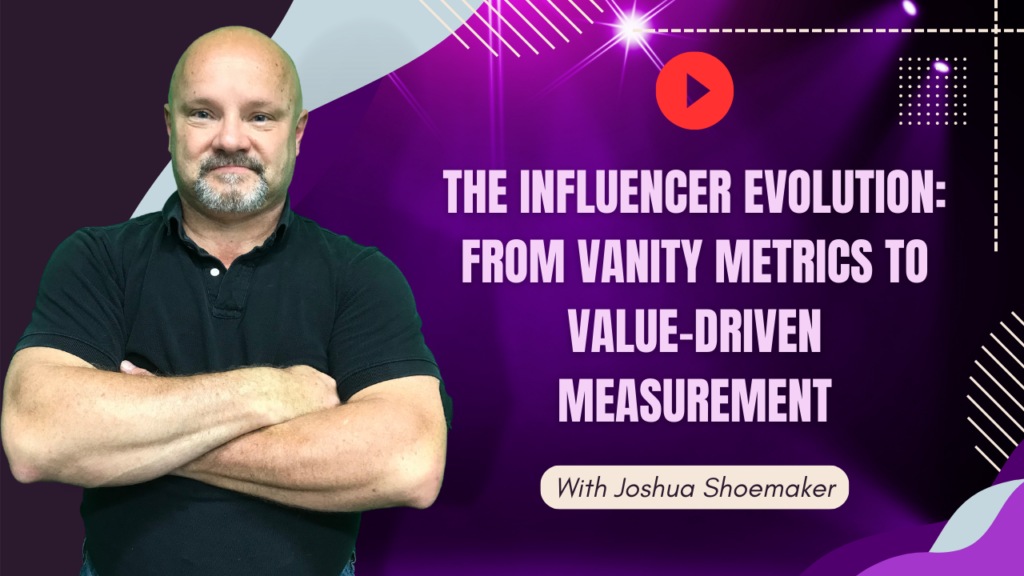
The influencer marketing landscape has undergone a seismic shift. Gone are the days when follower count reigned supreme, and brands chased after the biggest names with the most likes. Today’s savvy audiences crave authenticity, and the focus has turned towards influencers who cultivate genuine connections and inspire action. This evolution demands a new approach to measuring success, one that delves deeper than vanity metrics and reflects the true value an influencer brings.
The Rise of the Micro-Influencer:
The “mega-influencer” model, with its focus on celebrity endorsements, is slowly fading. Brands are increasingly recognizing the power of micro-influencers: individuals with smaller, highly engaged communities built on trust and shared interests. These niche authorities resonate more deeply with their audience, leading to higher conversion rates and brand loyalty.
Beyond the Like: A Multifaceted Approach
In this new influencer ecosystem, measuring success goes beyond the superficial. Likes, comments, and follower counts are no longer enough. Here’s how to measure the true impact of an influencer campaign:
1. Engagement Rate:
What it tells you: Engagement measures how actively an audience interacts with an influencer’s content. Look at metrics like likes, comments, shares, saves, and replies in relation to follower count. A high engagement rate signifies a more invested audience.
How to use it: Compare engagement rates between influencers to gauge genuine interaction. Don’t be afraid to partner with micro-influencers boasting impressive engagement over celebrities with passive followings.
2. Brand Sentiment Analysis:
What it tells you: This involves analyzing the overall tone of conversations surrounding your brand after an influencer campaign. Are they positive, negative, or neutral?
How to use it: Use social listening tools to track brand mentions and sentiment. Positive sentiment indicates a successful campaign that’s resonating with the audience.
3. Website Traffic and Conversions:
What it tells you: Track the number of visitors and conversions (purchases, sign-ups, etc.) generated through influencer content. This measures the campaign’s direct impact on your business goals.
How to use it: Use trackable links and discount codes to attribute conversions to specific influencers.
4. Brand Affinity and Loyalty:
What it tells you: This metric evaluates how the influencer campaign affects brand perception and customer loyalty. Are people more likely to recommend your brand after seeing the influencer mention it?
How to use it: Conduct surveys or track brand mentions after the campaign to gauge brand awareness and sentiment.
5. Content Quality and Alignment:
What it tells you: Evaluate the quality of the influencer’s content and how well it aligns with your brand voice and message. Is it visually appealing, informative, and true to the influencer’s style?
How to use it: Collaborate with influencers whose content style resonates with your brand and target audience. Provide creative freedom while ensuring alignment with your brand message.
Building a Sustainable Influencer Partnership:
Measuring success extends beyond individual campaigns. Look for influencers who align with your brand values for long-term partnerships. Here’s how to foster a mutually beneficial relationship:
1. Transparency and Authenticity:
What it means: Be transparent about sponsored content and encourage influencers to disclose partnerships authentically. Building trust with the audience is key to long-term success.
2. Collaborative Content Creation:
What it means: Involve influencers in the content creation process. Leverage their expertise to develop content that resonates with their audience and promotes your brand effectively.
3. Performance-Based Compensation:
What it means: Move beyond flat fees and consider offering incentives based on key performance indicators (KPIs) like conversions or website traffic. This incentivizes influencers to deliver high-impact content.
4. Ongoing Communication and Feedback:
What it means: Maintain open communication with your influencer partners. Provide feedback on their work and ensure they understand your campaign objectives.
The Future of Influence Marketing:
By focusing on value-driven metrics and building long-term partnerships, brands can unlock the true potential of influencer marketing. This evolving landscape demands a shift in mindset – away from empty vanity metrics and towards fostering relationships built on authenticity, engagement, and measurable impact. In the end, the most successful influencer campaigns are those that empower both the brand and the influencer to resonate deeply with their target audiences.